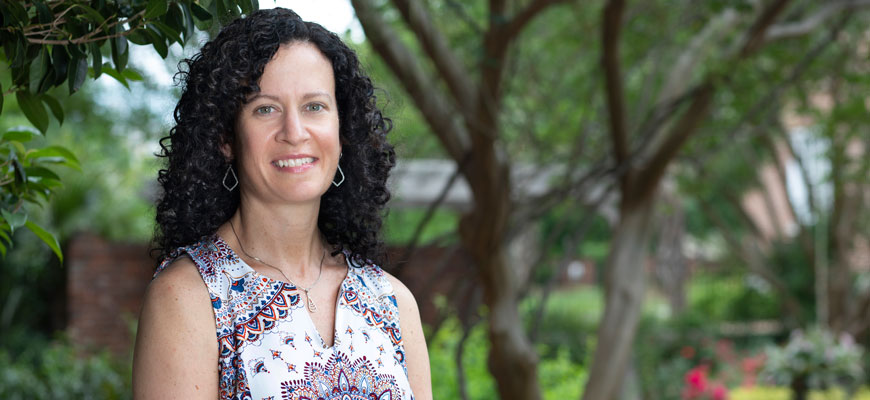
Chemistry professor named AAAS fellow
Biochemist Caryn Outten honored for iron research
Posted on: June 23, 2020; Updated on: June 23, 2020
By Megan Sexton, msexton@mailbox.sc.edu
Iron is an essential element for nearly every basic function in our bodies — it carries oxygen, transfers electrons and is required to synthesize DNA, RNA and amino acids. Just about every pathway in a person’s body involves iron in some way.
But too much iron can cause an iron overload disorder such as hemochromatosis, while too little can cause iron deficiencies such as anemia, a major global health problem.
Caryn Outten, the Guy F. Lipscomb Professor of Chemistry in the College of Arts and Sciences, researches iron metabolism and uses biochemical methods to understand how cells maintain iron levels that are not too high or too low. Using the single-celled eukaryote Saccharomyces cerevisiae, commonly known as baker’s yeast, as a primary model system, Outten investigates iron and redox metabolism using molecular genetics, protein biochemistry and cell biology approaches.
“As a biochemist, I’m interested in the study of metals because they are essential micronutrients that we need for a wide variety of cellular processes. Metals like iron also absorb light at specific wavelengths allowing us to visualize their functions. For example, the color of our blood changes when the iron in hemoglobin binds oxygen,” she says. “In my lab, we use yeasts to study iron metabolism because they are easier to work with than human cells or animal models. Yeasts are simple organisms, but the fundamental biochemical pathways they rely on for survival are similar to the pathways we use. The way they make energy, the way they break down carbohydrates and fats, and the way they acquire and use iron is similar to our own cells. Therefore, what we learn from yeasts is often applicable to higher, more complex organisms.”
For her research career in this area, Outten was recently elected a fellow in the American Association for the Advancement of Science, an organization that seeks to advance science, engineering and innovation for the benefit of all people. The organization, which has been awarding fellowships since 1874, also produces the Science family of research journals.
Some of Outten’s more recent work looks at understanding how infectious yeasts use and regulate iron, offering insight into how fungal infections could be treated.
As a biochemist, I’m interested in the study of metals because they are essential micronutrients that we need for a wide variety of cellular processes.
Caryn Outten, AAAS fellow
“When we are infected by a microorganism there is often a battle over iron because both the pathogen and human host need iron to survive. As an infectious microbe tries to scavenge our iron, our bodies respond by withholding iron to limit the infection. If we can uncover how fungal pathogens acquire and regulate iron, this may provide an opening for the development of new anti-fungal compounds.”
Outten’s interest in science goes back to childhood when her parents took the family on trips to national parks and she participated in the junior park ranger program. She loved the coast and exploring tidal pools, and first thought she might be interested in marine biology. Outten started college as a biology major, but soon switched to a double major in chemistry and biology, earning her bachelor’s degree from the College of William and Mary, and her master’s and doctorate from Northwestern University. She completed her postdoctoral research at Johns Hopkins University and has been at UofSC since 2005.
“I loved biology and the natural world, but I was really excited to discover how life worked at the molecular level. By using chemistry tools to study biology, you could really dig in and tease out these fine details.”